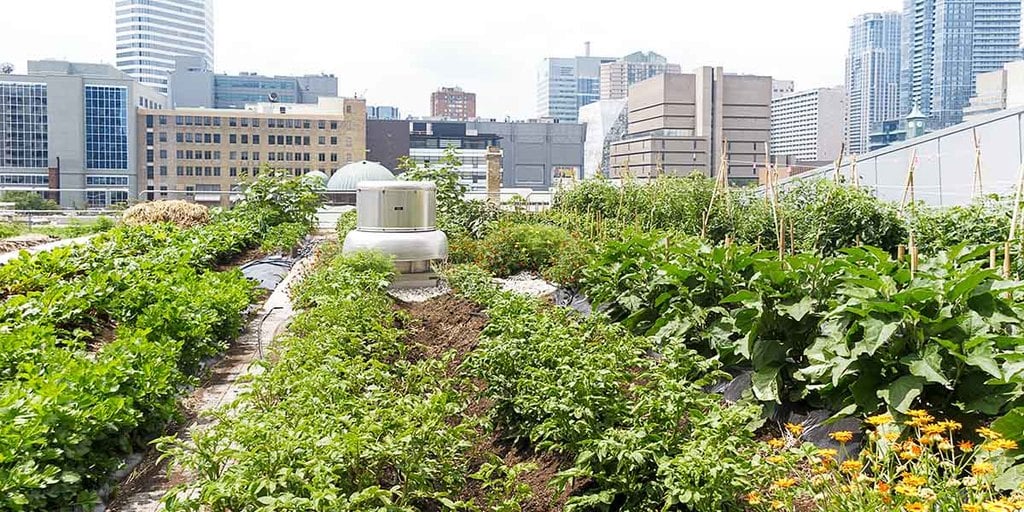City Blooming for Beginners
City Blooming for Beginners
Blog Article
The 30-Second Trick For City Blooming
Table of ContentsSome Known Factual Statements About City Blooming 4 Easy Facts About City Blooming ShownSome Known Details About City Blooming Facts About City Blooming UncoveredFascination About City Blooming
Intrigued in growing food for sale in the City of Chicago? Below is a checklist of frequently asked inquiries pertaining to the rules and laws that growers should consider when intending an urban farming project.
The zoning change does not modify any type of other codes managing composting, building authorizations, acquiring or leasing City owned residential or commercial property, organization licenses or environmental contamination. There are existing codes that regulate these issues and they stay in full result and might be suitable to your job. Neighborhood yards are usually owned or managed by public entities, civic companies or community-based organizations and kept by volunteers.
Urban farms expand food that is meant to be sold, either on a not-for-profit or for-profit basis. Due to their industrial function, city farms require a service certificate.
Little Known Questions About City Blooming.
The quantity of garden compost material can not exceed 25 cubic backyards at any type of offered time according to the criteria in 7-28-715 of the City's Municipal Code. Due to the fact that the dirt at the majority of new garden sites needs changing, compost, soil, wood chips, or other products can be obtained to build or improve the growing room.

If a structure permit is required then the hoophouse will be considered an accessory structure. You can discover more concerning the structure authorization requirements by speaking to the Division of Buildings. The 25,000-square-foot size restriction is intended to stop a single community yard from dominating a given block or taking away from the block's existing residential or industrial character.
The restriction does not put on gardens found in Public Open Space (POS) districts. Can there be more than one community yard that is 25,000 square feet on a solitary block? Yes. The size limit uses to private gardens, not to individual blocks. No. Secure fencing is not called for, nevertheless, gardens that have huge parking locations may be required Bonuses to mount fence or other landscaping functions.
The Greatest Guide To City Blooming
B1 & B2 districts require that all industrial usage tasks be performed inside. R districts limit commercial activity. The guidelines show the function and intent of the Zoning Code. Is fence needed for urban ranches? Yes. Fences may be needed, together with landscaping and testing, for sure car park areas and outdoor job or storage space areas depending upon area and the specific task happening.
Yes. Urban ranches need building licenses and zoning approvals before building and construction. Various other forms of city evaluation may be called for depending on details structures, activities, size, landscaping, licensing, public heath and stormwater monitoring concerns. A lot of these requirements are determined in the project style or permitting process, nevertheless, the applicant might be accountable to individually identify details licenses or allows that might be needed.
Yes. The kind of license is identified by what is taking place at the website. The Department of Service Matters and Consumer Protection can assist determine the particular sort of service permit that's needed. Yes. Off street parking is required for most business jobs in Chicago. The called for number of car park spaces is based upon the number of employees working on website and not the square video footage of the growing room.
The Best Strategy To Use For City Blooming

Yes. A metropolitan ranch can market garden compost product created on website, nonetheless, the procedure needs to comply with the policies in 7-28-715 of the Chicago Municipal Code. Yes. Aquaponic systems are allowed inside your home on urban ranches in many zoning areas. Nevertheless, a zoning evaluation and building license is required in order to set up structures or systems and a service certificate is required as defined above.
Approximately five hives or colonies of honey may be maintained as an accessory usage. Nevertheless, beekeepers have to sign up with the Illinois Department of Agriculture. To find out more regarding the proposed zoning modification you might contact the Department of Housing and Economic Advancement, Bureau of Preparation and Zoning at 312.744.8563.
, which takes area in rural areas at the edge of suburban areas.
The Buzz on City Blooming
It can involve a motion of organic growers, "foodies" and "locavores", who look for to develop socials media founded on a common values of nature and area holism. These networks can create using official institutional assistance, becoming incorporated right into regional community planning as a "shift town" movement for sustainable urban development.
Some of the first proof of urban farming comes from Mesopotamia.
Report this page